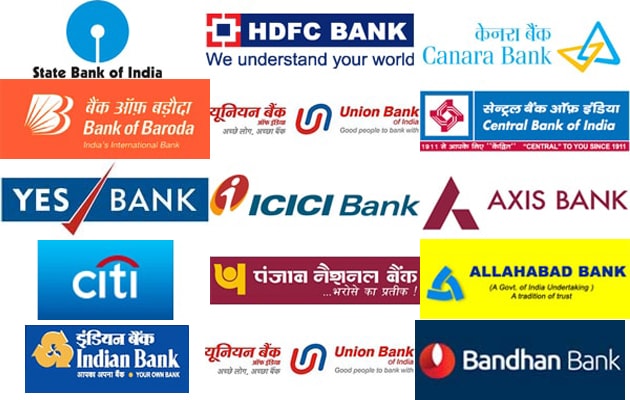History of Banks in India
The banking system can be traced back to somewhere around 2000 BC, In modern India, the banking system started in the 18th century with the establishment of the first bank in India and names as “Bank of Hindustan” in the year 1770. The largest and oldest still existing bank is State Bank of India established in the year 1806, other oldest banks which are still in existence are Allahabad Bank established in 1865 and Punjab National Bank established in the year 1894.

After Independence first big move by the government is nationalizing the bank in the year 1960 which was then taken in order to make the banking sector controlled by the government. Total of 13 banks was nationalized in the year 1960. This move made about 85% of the Bank deposit control by the government. After that, another nationalization of 6 major banks held which resulted in the 91% of the bank deposit to be controlled by the government as Government Bank.
In 1990, the banking sector gets a huge push by liberation policy under which the license is provided to the small private banks. These banks contributed furthermore to the Indian economy and spiked the growth of the Banking Sector.
Enclosure of ATM
The First setup of the ATM Machine is setup In the year 1987 by the HSBC Bank in Mumbai. After that in the next twelve years, another 1500 ATMs established. As of October 2018, there is 1,04,500 ATM Machine in India of which 59% are of the public sector and rest being public sector banks.
Types of Banks
There are different types of Bank based on the business they are handling. Below is the type of bank based on the business they handle-
- Commercial Bank
- Development Bank
- Land Development Bank
- Co-operative Bank
- Payments Bank
- Investment Bank
- Merchant Bank
- Foreign bank
- Central Bank
Commercial Bank
Commercial bank is very important banks in India, these banks save money for the depositors and lend that money as a loan to the business. The profits banks make are from the return on the loan amount with interest.
Development Bank
Development Bank is those banks that provide big and long-term loans to the Industries to promote industrial development in the country.
Land Development Bank
These banks lend long-term loan to the farmers in India for development of the land or to acquire the new land.
Co-operative Bank
Co-operative banks are set up to provide a loan at low rates to the agriculture societies. These banks function under the Co-operative society law in India.
Payments Bank
Payments bank is a specialized bank that is used to pay daily bills. This enables the bank to get directly involved in the transaction. Before the payments bank cash is used to pay the vendors which are kept by the people and not brought into the financial system but with the introduction of Payments Bank, the payment bank get directly involved in the transaction by saving the money in virtual forms. Some examples of Payment Banks are Paytm Payments Bank, Jio payments Bank, etc.
Investment Bank
Investment Bank is an intermediately whenever corporate entity wants to issue new equity or debt securities. These Banks also invest in companies by purchasing shares and equities
Merchant Bank
Merchant Banks are those banks that raise money for a company by providing the company shares to the market for the lenders.
Foreign bank
Foreign banks are those banks that are headquartered outside of India. Banks like CITI Bank, Bank of America are prime examples.
Central Bank
Central Bank is banker’s Bank. This is the bank that controls the banking system in India. Reserve Bank of India is the Central bank that controls all the Indian banks.
Banking Regulatory
Reserve Bank of India is the Central Bank of India that regulates the financial system in India. The function of the RBI includes overseeing monetary policy, issuing currency, managing foreign exchange, working as a bank for government and being the central authority to regulate all the India Banks.
RBI commenced its operation in the year 1935 in accordance with the Reserve Bank of India Act. 1934. It plays a big role in the development strategies of the Government of India. At the time of establishment, the bank was privately owned but later on was nationalized in 1949 and thereafter fully owned by the Government.
Banking Codes and Standards Board of India (BCSBI)
Banking Code and Standard Board of India (BCSBI) is an independent and autonomous body that protects the customer of banking service in India. This board was established by SS Tarapore (Former deputy general of RBI) to provide the people with better financial services.
Banking Instruments
Banking instruments consist of cheques, draft, bill of exchange, credit card, debit card etc. It is a tool that facilitates the use of banking. People use various banking tools that make their banking operations like paying huge sums in the form of cheques. Now the modern day banking instrument like Mobile Apps and Net Banking are used to fund transfer that made the fund transfer fast and secure.
Technological Advancement in Banking Sector
Banking Sectors is a sector that has seen a very big technological advancement in the country. The technology like net banking, mobile banking, and different fund transfer system facilitated the people to use the advanced method of banking which ensures the use of secure and safe banking. There is still a lot of technological involvement in the banking sector.
I’m Shiv Kumar, a graduate with a passion for finance, marketing, and technology. My journey into finance started with a desire to understand money management and investing.
Our main goal is to empower individuals through financial education. We believe that everyone should have the opportunity to build a strong financial foundation. Whether you’re a seasoned investor or just getting started, we provide articles, guides, and resources to help you navigate the financial landscape.
I invite you to join our community of financially savvy individuals. Feel free to ask questions, engage with our content, and explore the topics that matter to you. Together, let’s take control of our financial futures.




